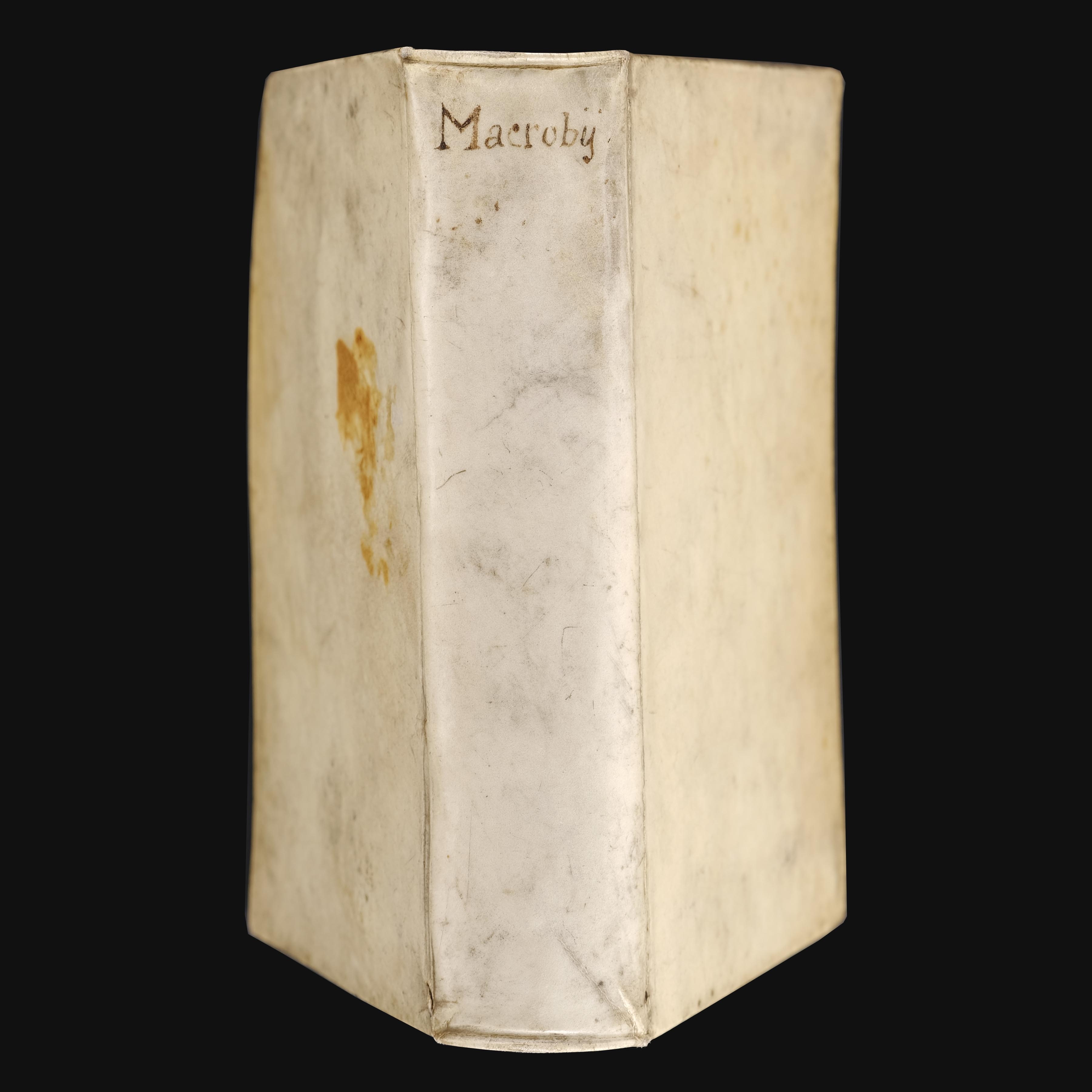This item has been sold, but you can get on the Waitlist to be notified if another example becomes available.
1548 Lyon Edition of Macrobius with a Fascinating Early World Map
World-macrobius-1548
Title
1548 (dated) x in (0 x 0 cm)
Description
The Cosmos of Cicero
Cicero's Somnium Scipionis comprises nearly all that survives of the sixth book of the poet and philosopher's De Republica. It describes a dream of the Roman General Scipio Aemilianus, which was postulated to have taken place two years prior to his 146 BCE burning of Carthage. The dream, as related by Cicero, was relevant to geographers because it proposes several key ideas reflecting the cosmology of Cicero and the Roman world. In his dream, Scipio looks down upon Carthage 'from a high place full of stars, shining and splendid;' his grandfather appears, telling him that as the reward due a loyal Roman soldier, he might after death inhabit the Milky Way among the stars. Scipio perceives that Rome is a very small part of the world, itself made insignificant by the stars, 'Indeed the Earth itself seemed to me so small that I was scornful of our empire, which covers only a single point, as it were, upon its surface.' Scipio (per Cicero) describes the universe as comprising nine celestial spheres, of which the Earth is the innermost and smallest, while the outermost is heaven. The planets between move (their motion creates sound, the music of the spheres) while Earth remains fixed at the center. Scipio's attention moves to the surface of the Earth and describes its climatic belts.Macrobius' Commentary and the Maps
Macrobius expanded on Cicero's text on multiple themes - not limited to the nature of the soul and astronomy. In addition, both manuscript and printed editions of the Commentaries included diagrams and maps in order to illustrate the cosmography outlined in Cicero's work. It is not clear if Macrobius himself produced such a map: of 150 manuscripts surviving of the work, only a hundred included a map. It is entirely possible, then, that later copyists produced maps and diagrams to clarify the work. These were nevertheless influential, setting forth geographical ideas that influenced mapmakers well into the 16th century.Most notable among these is the woodcut map depicting the world as described in Macrobius' text. It is attractively composed and surrounded by wind-heads. The upper portion of the map presents the known habitable world - the oikoumene - and an unknown southern continent ('the temperate antipodes unknown to us') divided by an equatorial ocean, thought to be boiling and impassable. While the voyages of Marco Polo and the 15th-century explorers would certainly disprove the existence of a boiling equatorial zone, the concept of antipodean balance reflected on this map fueled the conviction of 16th-century geographers like Mercator and Ortelius that a southern continent must exist, and led to their inclusion of the immense southern continent on maps of the world and the Americas.
Macrobius' Saturnalia
The book combines Macrobius' commentary on Cicero with his Saturnalia, an idealized account of the discussions held at the house of 4th-century Roman aristocrat Vettius Agorius Praetextatus during the holiday of the Saturnalia (hence the title.) The conversations cover a variety of historical, mythological, critical, grammatical, and antiquarian topics. It is worth noting that the 17th and 18th-century notations appearing in the present text are mainly confined to the Commentarii in Somnium Scipionis and are not nearly as extensive in Saturnalia. The centuries, apparently, had judged which of these works would retain their relevance.Publication History and Census
This edition of Macrobius was published in Lyon by Sebastianus Gryphius in 1548; Gryphius' editions had a long print history, but we see only 19 of the 1548 edition in institutional collections. In editions by a variety of publishers, Macrobius' works are well represented in institutional collections.Cartographer
Macrobius Ambrosius Theodosius (c. 370 - 430) was a Roman author, grammarian, and philosopher active in the 5th century. He survives only in his writings and of his life, little is certain. In his Saturnalia, he writes that he was 'born under a foreign sky', so we can be confident he was not born in Rome (or even Italy), but of which sky, scholarship is uncertain though most lean towards Tunisia (Africa Vetus). Some believe he was Greek, though his fluency in Latin, greater than his fluency in Greek, has led others to speculate that Latin was his first language. He is associated most often with a 'Macrobius Theodosius' cited in the Codex Tehodosianus as a praetorian prefect of Spain from 399 - 400, a proconsul of Africa in 410, and praepositus (lord chamberlain) in 422. Many believe he was an early Christian convert, though such is not evident in any his writings. He does mention a beloved son, Macrobius Plotinus Eustathius. Regardless of his biographical obscurity, he was a prodigious scholar whose works had a long and substantial influence. Macrobius' commentaries on Cicero's Somnium Scipionis ('Dream of Scipio') became the key source for Neoplatonism in the Latin world and included some foundational discussion of the nature of the world and the cosmos. Other works include the Saturnalia, a collection of Roman religious and antiquarian lore, and the now-lost linguistic work De Differentiis et Societatibus Graeci Latinique Verbi ('On the Differences and Similarities of the Greek and Latin Verb'). More by this mapmaker...










